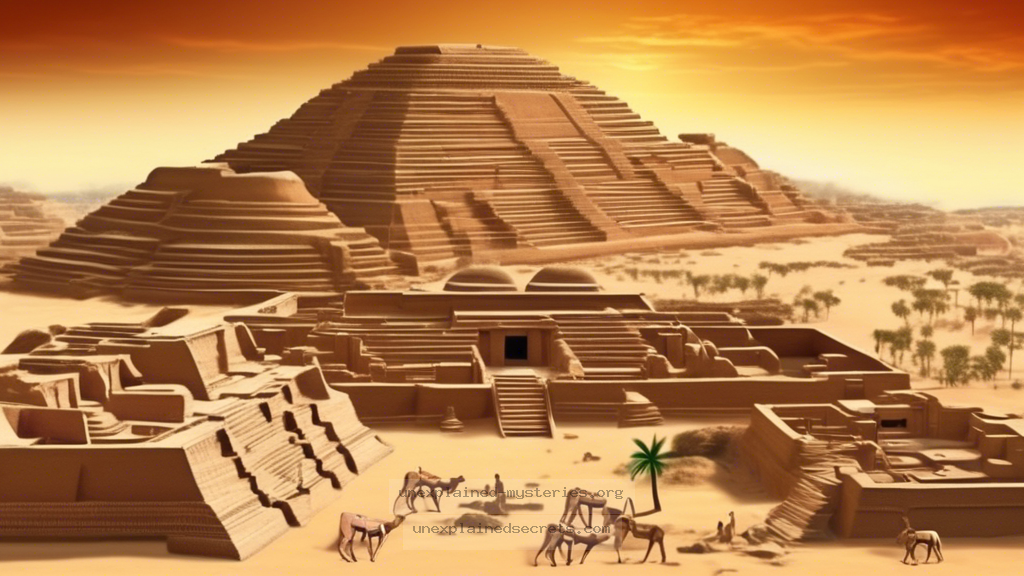What Happened to the Indus Valley Civilization: The Mystery of Its Sudden Decline?
What Happened to the Indus Valley Civilization: The Mystery of Its Sudden Decline?
The Indus Valley Civilization (IVC), one of the world’s earliest urban cultures, thrived around 2500 BCE in what is now Pakistan and northwest India. With sophisticated city planning, advanced drainage systems, and extensive trade networks, the IVC was a hallmark of human achievement. However, by 1900 BCE, the civilization entered a mysterious decline, leading to its eventual disappearance. What caused this sudden downfall? This question is not just an academic inquiry; it holds implications for understanding the resilience and vulnerabilities of human societies. By exploring this enigma, we can gain insights into the complex interplay of environmental, social, and economic factors that can lead to the rise and fall of civilizations.
The Historical Context of the Indus Valley Civilization
The Indus Valley Civilization flourished during the Bronze Age, marking a significant period in ancient history. Spanning from approximately 3300 to 1300 BCE, it included major urban centers like Harappa and Mohenjo-Daro. The civilization is characterized by its impressive architecture, including well-planned streets and advanced drainage systems, which suggest a high degree of social organization.
Trade was a vital aspect of the IVC, with evidence of commerce extending as far as Mesopotamia. The IVC was also notable for its writing system, although it remains undeciphered. The civilization’s economy was primarily agrarian, relying on wheat, barley, and cotton, which were cultivated using sophisticated irrigation techniques.
The Theories Behind the Decline
The mystery of the IVC’s decline has spurred numerous theories, ranging from environmental changes to social upheaval. Here are some of the most prominent theories:
- Climate Change: Some researchers argue that a significant shift in climate, possibly leading to drought conditions, may have impacted agricultural productivity.
- River Shifts: The Indus River, crucial for agriculture, might have changed course, leading to the abandonment of cities.
- Invasion Theories: Others suggest that invading groups from the north, such as the Aryans, could have contributed to the civilization’s downfall.
- Internal Conflict: Social strife or economic instability could have led to a breakdown in the societal structure.
Evidence of Environmental Change
One of the most compelling theories regarding the decline of the Indus Valley Civilization is the impact of climate change. Recent studies of sediment cores from the Arabian Sea have indicated a notable decrease in monsoon rains around 2000 BCE. Such a shift would have drastically affected agriculture, leading to food shortages and, potentially, social unrest.
Additionally, archaeological evidence shows that several major urban sites experienced a reduction in population during this period, suggesting that people were abandoning cities in search of more viable agricultural lands. This phenomenon aligns with the idea of a gradual decline rather than a sudden collapse.
| Evidence Type | Description | Significance |
|---|---|---|
| Climate Data | Analysis of sediment cores indicating decreased monsoonal activity | Suggests potential agricultural decline |
| Population Decline | Archaeological findings of reduced urban populations | Indicates possible migration or abandonment |
| Urban Abandonment | Evidence of large-scale desertion of cities | Supports the theory of environmental stress |
Social and Economic Factors
In addition to environmental factors, social and economic dynamics likely contributed to the decline of the Indus Valley Civilization. The complexity of urban life in the IVC may have made it vulnerable to disruptions. For instance, reliance on a single crop or trade route could have created weaknesses in the economic structure. If agricultural yields fell due to climate change, the effects could ripple through the economy, leading to shortages and increased competition for resources.
Moreover, as cities began to decline, the social fabric could have frayed. Evidence of fortified structures in later layers suggests that communities may have turned inward, focusing on self-defense rather than cooperation. This shift could indicate rising tensions and conflict, further destabilizing the civilization.
The Invasion Theory: A Controversial Perspective
While many researchers emphasize environmental factors, an alternative perspective focuses on the possibility of invasions or migrations. The arrival of Indo-Aryan tribes around the same time as the IVC’s decline has led some to theorize that these groups may have played a role in the civilization’s downfall. However, this view is contentious, as there is limited archaeological evidence to support widespread violence or destruction.
Instead, it is essential to consider how migrations might have led to cultural exchanges rather than outright conflict. The blending of cultures could have transformed the social landscape of the region, leading to the eventual evolution of new societies rather than the complete eradication of the IVC.
Common Misconceptions
Several misconceptions exist surrounding the Indus Valley Civilization and its decline. Here are some clarifications:
- Myth of Sudden Collapse: Many believe that the IVC fell suddenly, but evidence suggests a gradual decline over centuries.
- Homogeneity Assumption: It’s often assumed that the IVC was culturally uniform; however, archaeological findings indicate a diverse array of practices and beliefs.
- Invasion vs. Migration: The narrative of invasion oversimplifies complex interactions; migration and cultural blending were likely significant factors.
Best Practices for Investigating Lost Civilizations
For those interested in studying lost civilizations like the Indus Valley, several best practices can enhance research quality:
- Interdisciplinary Approach: Engage with various fields such as archaeology, anthropology, and climate science to develop a holistic understanding.
- Field Research: Conduct excavations and surveys to gather primary data, while also respecting local contexts and communities.
- Technological Integration: Utilize modern technologies such as satellite imagery and GIS to analyze spatial data effectively.
Future Developments and Ongoing Research
Ongoing research into the Indus Valley Civilization continues to refine our understanding of its decline. Recent studies focusing on the analysis of ancient DNA and isotopic data are shedding light on migration patterns and dietary practices. Additionally, advancements in climate modeling are helping researchers simulate the environmental conditions that may have contributed to the civilization’s decline.
As new archaeological sites are discovered and existing sites are re-examined with new technologies, our understanding of the Indus Valley Civilization will undoubtedly evolve. Collaborative efforts among international researchers are crucial to building a comprehensive picture of this enigmatic civilization.
Conclusion: Unraveling the Mystery of the Indus Valley Civilization
The decline of the Indus Valley Civilization remains one of history’s most intriguing mysteries. While environmental factors like climate change and river shifts played significant roles, social dynamics and potential migrations also contributed to the complexity of its downfall. By understanding the multi-faceted nature of this decline, we can gain insights into the vulnerabilities of civilizations throughout history. As research continues to unfold, the Indus Valley Civilization serves as a reminder of the intricate interplay between environment, society, and culture. Future studies may not only illuminate the past but also provide valuable lessons for contemporary societies facing similar challenges.
Other Articles
Recent Posts
- What Happened to Flight MH370? The Conspiracy Theories That Still Haunt Us
- What Secrets Lurk Within the Walls of the Infamous Trans-Allegheny Lunatic Asylum?
- What Evidence Supports the Existence of Bigfoot in the Pacific Northwest?
- What Happened to the Indus Valley Civilization? Unraveling the Mysteries of Ancient Urban Life
- Can Telepathy Be Scientifically Proven Through Laboratory Evidence?







